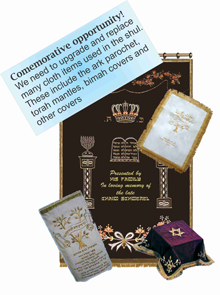PURIM is a one day celebration commemorating the saving of the Jewish Communities living under Persian rule. The story of Purim is said to have taken place in about 450 BCE – although there is some discrepancy about this date. Purim is celebrated on the 14th of Adar and derives its name form the PUR, meaning “lot”. It recalls that Haman cast “lots” to determine the day and month for the execution of his plans to exterminate the Jews of Persia. When there is a Leap Year in the Jewish calendar, there are two months of Adar, known as Adar Aleph(1) and Adar Bet(2), the law is that Purim is celebrated in Adar Bet(2).
The Jewish calendar is made up of two types of festivals.
Festivals written in the Torah (Pesach, Shavuot, Succot, Rosh Hashana and Yom Kippur) and festivals instituted byt the Rabbis(e.g. Purim and Channukah)
Purim is a Rabbinic Festival and it is for this reason that the prohibitions that apply to Shabbat and Yom Tov do not apply on Purim.
Shabbat Zachor
The Shabbat preceding Purim is called Shabbat Zachor. It is a positive Torah Mitzvah to read this publicly.(The Shabbat to Remember- Zachor being the Hebrew word for Remember), and two Torot are taken from the Ark instead of the usual one. In the first regular Sidra of the week is read, and in the second the portion reminding us of the deeds of Amalek from the Sedra of Ki Tetze. The Haftorah also deals with Amalek.
Amalek was the first nation to attack the Children of Israel after they had crossed the Red Sea, and since Haman was a descendant of Amalek we read this portion on the Shabbat before Purim. It is a positive mitzvah (commandment) in the Torah to obliterate the memory of Amalek. We are obliged to educate our children in each generation about the deeds of Amalek. For the purpose of fulfilling this commandment the sages have prescribed public reading of this passage (the first Amalek grandson was Esau)
Ta’anit Esther: (The Fast of Esther – 13 Adar)
There are different types of fast days in the Jewish calendar. Apart from Yom Kippur which is written in the Torah, there are fast days which have been instituted by our Sages, known as Rabbinical Fast Days. These are divided into two categories:
a) Full day fast (from Sunset to Sunset).
b) Half day fast (from Sunrise to Sunset).
The only full day Rabbinical Fast is Tisha B’Av, recalling the destruction of the First and Second Temples.
The fast of Esther is a half day fast and is the day before Purim. In the days of Mordechai and Esther, the Jews assembled on the 13 Adar to defend themselves and to avenge themselves from their enemies. They needed to plead with Hashem to help them, and we find that, on similar occasions, such as when Moshe Rabbeinu fought with Amalek, the B’nei Yisrael would fast, as an appeal to Hashem for help. We can therefore assume that also in those days they fasted on the 13 Adar.
Consequently, the Jewish people accepted this day as a public fast day, which became known as Ta’anit Esther. This is to remind us that Hashem sees and hears the prayers of every man in trouble, when he fasts and returns to Hashem with all his heart, just as He did for our fathers then.
THE FOUR MITZVOT LAWS OF PURIM
- THE READING OF THE MEGILLAH: The Megillah retells the events surrounding Purim. This is the most prominent ritual feature in the observance of Purim. The Megillah is read twice – in the evening and the following morning. It is obligatory for both men and women to hear the reading of the Megillah. Before the Megillah is read it is unrolled so as to give the form of a letter of dispatch. The Megillah may be read all night till the coming of dawn. During the day the Megillah may be read from sunrise to sunset.
- MISHLOACH MANOT: (Sending of food parcels). This is the custom of sending gifts of food friends. One should send a minimum of 2 ready to eat foods (i.e. cake and chocolate), to at least one person. The Mitzvah of Mishloach Manot must be performed on the day of Purim. According to some authorities a mourner is free of this obligation.
- MATANOT LA’EVYONIM: (Charity). This is the giving of charity to the poor, to enable them to partake of the joy of Purim. The Mitzvah of Mattanot La’evyonim and the giving of gifts to the poor, recall the brotherly love which Esther and Mordechai awake among all Jews.
- SEUDAT PURIM: On the day of Purim one should partake in a festive meal; this meal normally starts in the late afternoon and continues through to the evening. The reason for having the meal towards evening is that people are busy with Mitzvah of Mishloach Manot during the day.
MORE INFORMATION ABOUT PURIM AND THE MONTH OF ADAR:
- 1. On the 7th Adar Moses was born, and he died 120 years later on the very same date. Some people have the custom of fasting and saying special prayers on this day in memory of the great leader of the Jewish people.
- There are five Megillot in the Bible. The Megillah of Esther is the only one that has to be written on parchment – and the only one where we recite a Brocha before and after reading it. (Three blessings are said before, and one afterwards).
- When we read the Amidah – we add the Prayer Al Hanissim – thanking G-d for his miracles. This prayer is also said during the benching (Grace after meals).
- During the morning service we read a portion of the Torah referring to the wars with Israel’s arch enemy, Amalek.
- THE HALF –SHEKEL: Before Mincha on Ta’anit Esther, each person gives 3 half coins to charity. These should be of the local currency and coins that are called a ‘half-coin’. This is to commemorate the half shekel which was contributed to the Beit Hamikdash in the month of Adar.
- Noise making upon mention of Haman’s name in the Megillah – Haman was a descendant of Amalek, of whom it is written: ‘You shall erase the memory of Amalek (The Hebrew terms of ‘erasing’ and ‘beating’ are phonetically alike).
- Hallel is not said on Purim. The Megillah Reading is regarded as the Hallel of the day.
- Eulogies are prohibited on Purim. A person in mourning does not practice mourning in public on Purim, as is the case on Shabbat.
- In Jerusalem (Jerusalem only, not Israel), Purim is celebrated one day later on the 15th of Adar. The reason for the different dates designated fort he observance of Purim is that the Jews of Shushan originally observed the festival on a different day than the Jews who lived elsewhere. In all other provinces the Jews waged war on the 13th and observed the 14th as a day of festivity and rejoicing. Whereas Jews in Shushan waged war on both the 13th and the 14th and observed the 15th as a day of festivity and rejoicing. Since Shushan was a walled city and Jerusalem was also at one stage was surrounded by a wall, it was decided to remember the events in Shushan by reading the megillah in Jerusalem on the 15th of Adar.
- In honour of the Megillah one should wear Shabbat clothes to shul on Purim.
- If there is a bris on Purim it should be performed before the reading of the Megillah
- The Month of Adar is the last month of the year counting from Nissan and is thus referred to in Scripture. Even in the event of a leap year when a second Adar is added to the regular twelve months the second Adar is also called the twelfth month. Thus it is written in Megillat Esther “And in the twelfth month which is the month of Adar”.
- Rosh Chodesh Adar always consists of 2 days.
- “And Mordechai would not kneel or bow down” Why did Mordechai endanger his people by arousing Haman’s anger? The Sages have said that an idol hung on Haman’s heart in order to trap Israel into sin by bowing down to him, idolatary is one of the three transgressions which one may not commit even on pain of death.
- Why is it said “would not kneel or bow down” in the future tense rather than “he did not kneel or bow down”? We learn from this that Mordechai sought to let Haman know that he would never bow down to him for he could have avoided his presence. Instead, he intentionally appeared before Haman to demonstrate his refusal to bow.
- In a leap year in which we have two months of Adar, Purim is always celebrated in the second Adar.
- The Megillah is folded like an iggeret (letter) before the reading. This is only required when the Megillah is read publicly not privately.
Reading the Megillah both at night and in the morning is a duty incumbent upon every man and woman. The reader should have a clear loud voice and annunciate each word and letter clearly. If one fails to hear even one word or letter, he does not fulfill his obligation and must read from that point again. The reader must intend to read and recite the brachot on behalf of the community. The congregation must likewise intend to fulfill their obligation through his reading and brachot. This includes the final concluding bracha.







